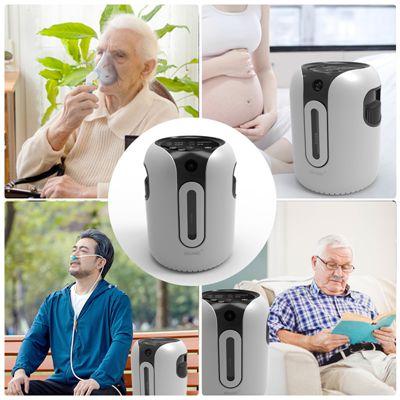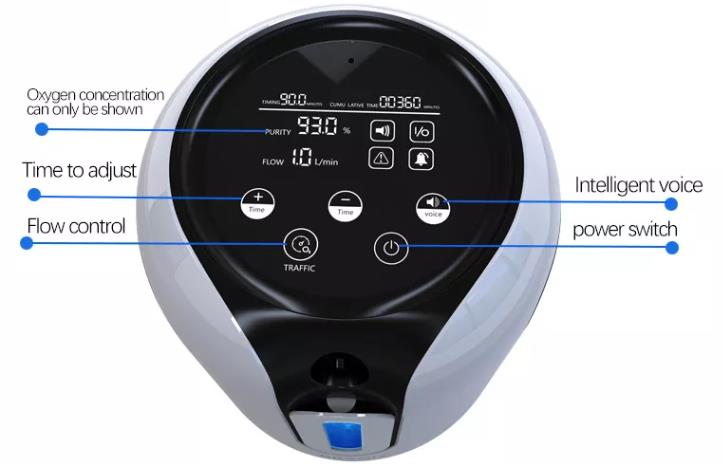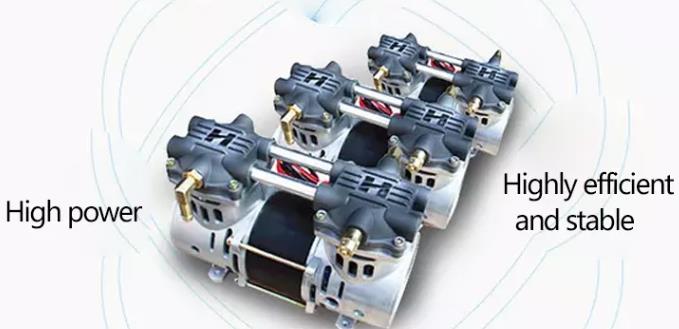Basic knowledge about oxygen therapy:
To survive, we need to breathe in oxygen to go into our lungs, and then the oxygen will pass to the bloodstream in our bodies. However, in some cases, the amount of oxygen circulating in our blood can fall far below normal levels. For example, the flu, lung cancer, COPD (chronic obstructive pulmonary disease), and asthma are common heath issues that can cause oxygen levels to drop sharply. Specifically, when our blood oxygen levels drop below 60 mm Hg, that is considered too low and indicates the need for oxygen therapy; using oxygen therapy means inhaling extra oxygen from some form of oxygen-conserving container. Surely, this kind of device needs to be prescribed by a doctor.
A lot of doctors choose to prescribe an oxygen concentrator (also known as oxygen generator) for their respiratory patients. Currently, thanks to the evolution of medical technology, oxygen concentrators are no longer only used in hospitals. More and more people start to use oxygen concentrators at home. Oxygen concentrators have already become a necessary item of home medical devices to support people’s daily oxygen needs.
IMDK oxygen concentrator:








Model No: C305O1
Power: 220V-50hz
Input Power: 120W
Ambient Temperature Range: 22℃~55℃
Relative Humidity Range (without condensation phenomenon): ≤93%
Traffic: 1~7L/Min, or 1~10L/Min
Pressure Range: 500~1060 hPa
Dimension: 230*230*304mm
Service Life: 5 years (8000 working hours)
Noise Level: 52.9 db
Note: oxygen concentrators should be stored in an indoor environment where there is adequate ventilation and there is no intense sunlight and corrosive gases. When you have to move it, make sure to avoid sharp shakes, being inverted, or being placed on the horizontal level.
Product demonstration:

Functions and features:
- To make sure users can breathe in clean oxygen, the generated oxygen flow goes through 2 disinfection processes – it is purified not only by plasma ions but also by multiple layers of high-performance molecular sieves.
- A lot of people who have respiratory diseases just bought oxygen concentrators without the function of nebulization, so they have to purchase extra nebulizers. And yet our IMDK oxygen concentrators are a device that combines the two functions – they not only can generate highly purified oxygen but also can deliver the nebulized oxygen.

- It can work stably for a long time – it can work normally for up to 48 hours without interruption.
- You can easily adjust according to your needs – regardless of any parameter in the device, the unit value you can adjust is as low as 0.1.

- Almost all oxygen concentrators inevitably produce a certain range of noise that can be measured in decibels. With the optimized low-noise design, our oxygen concentrators create a more quiet environment for users than other brands.
- There are 7 gears that users can change. This caters to the needs of different groups of users, whether they are under severe/moderate hypoxia or just want to take in more clean oxygen to stay healthy. Moreover, it has two special gears that support the double oxygen supply, which enables two users to inhale sufficient oxygen simultaneously.
- This portable machine can work better with a high power supply system, such as a vehicle power system; so you can plug it into your car for long trips during which you will continuously breathe in sufficient oxygen.

Frequently Asked Questions:
- “How often should I replace the oxygen suction tube?”
It is advisable to replace the tube once a year; and to prolong the working life of the tube, the inside of the tube should be kept dry after every use.
- “What kind of water should the oxygen concentrator use?”
You might prefer distilled water because it is not only safe to drink but also stripped of other impurities.
- “How much water should I add to the water tank?“
Oxygen can be continuously supplied even if you do not add water. The real purpose of adding water is to humidify the oxygen that will be breathed by patients. In general, the amount of water should not exceed the specified maximum water level; otherwise, the water may be sprayed out into the oxygen suction tube.
- “Why do I feel my oxygen tube is dribbling water?”
This is the condensation phenomenon of the moist air, which is often perceived as a “rainout”. Therefore, if your room is cold, the humidified, warmed air will naturally cool after it hits the relatively cold air; during the process, the amount of water vapor that the humidified, warmed air can hold is significantly reduced, which causes the water vapor to “rain out”.
- “How often need I to change the water in the water tank?”
Generally, if the amount of water reaches the maximum level, it will be used up within 2~3 hours. So you might change the water every two hours.
Welcome to inquire! We will respond within 24 hours!
